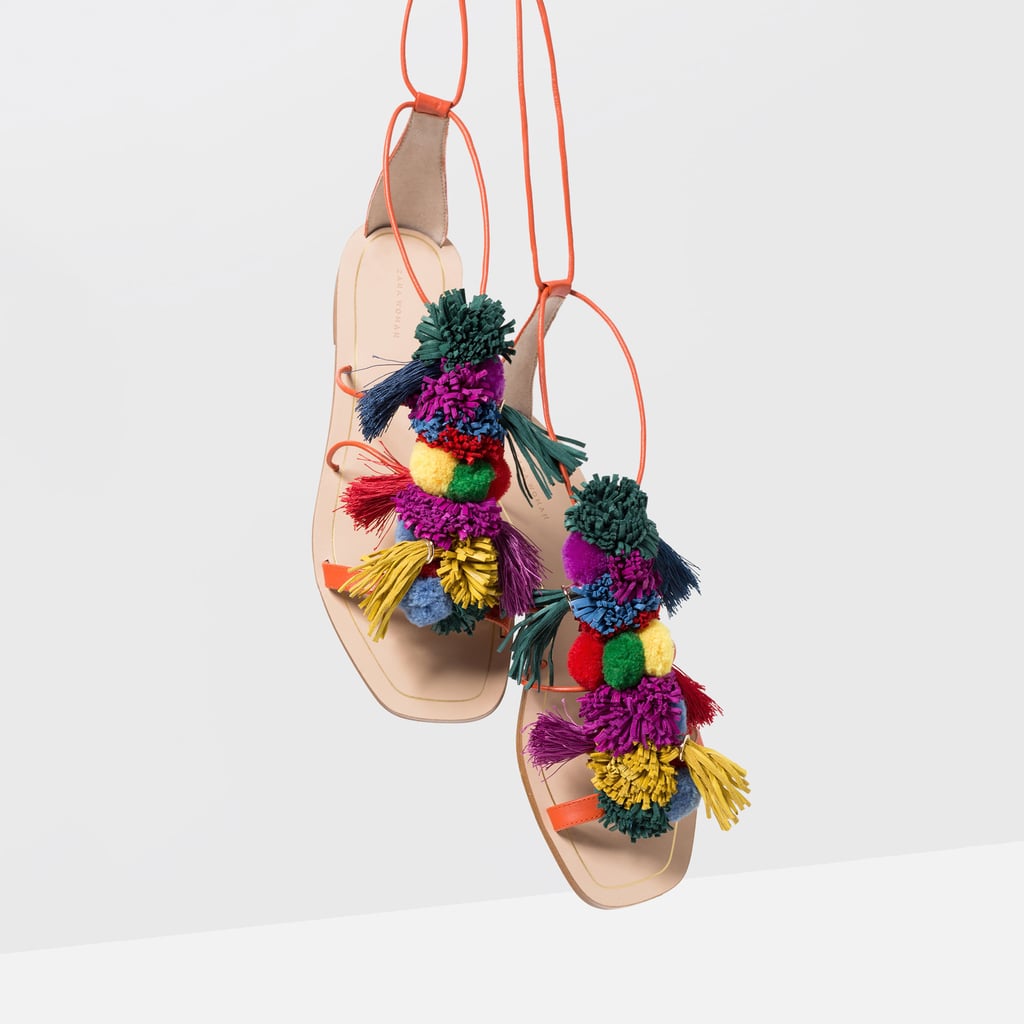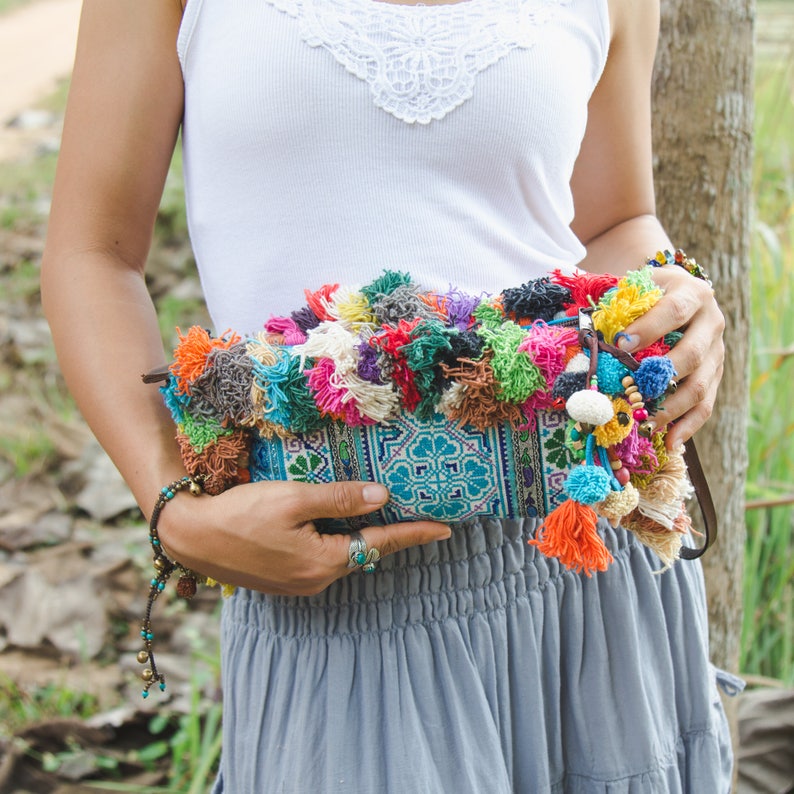Week 4: Pompom Profiteers
Grace Petersen
May 19, 2019
Grace Petersen
May 19, 2019
Already week four of our compact challenge, the time seems to fly by so quickly. This past week was a whirlwind of celebrations in my house, with both of my siblings birthdays as well as mother's day all happening! Normally, I would go out and buy presents for all of them, but with the challenge in mind I exercised some creativity and made a few handmade accessories (and cake). As I was working on making one particularly silly necklace with pompom material, I started to think about a connection between the recent pompom fashion trend and what the Hmong wear in Paj Ntaub flower print costume.
 |
| Pompom Embellished Sandals (Zappos) |
 |
| Dolce & Gabbana Iphone Case |
 |
| Hmong Paj Ntaub costume |
 |
| Hmong Hill Tribe Fair Trade Clutch (ChangnoiBags on Etsy) |
In order to answer this question, I began to search for Hmong pompom clothes and accessories on sites like Etsy, and found a treasure trove of pompom style pieces similar to the designer and consumer goods I'd seen before. Like any good UC Davis student, my brain immediately began to sound the 'cultural appropriation' alarm bells. That is, before I put a stop to it and began to question whether or not that's a useful phrase to say. Ava McCall, when speaking with Hmong women on their experience as textile producers writes that "For small groups of Hmong women who sell their products at local art fairs, the money they earn usually supplements the family income" which tellingly shows an economic inequality between high-end designers using a motif in fashion and those who traditionally produce it.
Minh-Ha Pham wrote in a 2014 article that "there’s a big problem with critiques of cultural appropriation. They reaffirm the very thing they intend to oppose: white Western domination over and exploitation of culture at the expense of everyone else," and what she means by this is that the debates over appropriation vs appreciation can distract us from the real problem of economic exploitation. So instead of using all of my energy worrying if it was 'woke' of me to put pompoms on a necklace, I decided that once this challenge ends, I am focusing on finding ways to support local artisans instead of major brands.
Works Cited:
Ava L. McCall (1999): Speaking through Cloth: Teaching Hmong History and Culture through Textile Art,The Social Studies, 90:5, 230-236
No comments:
Post a Comment